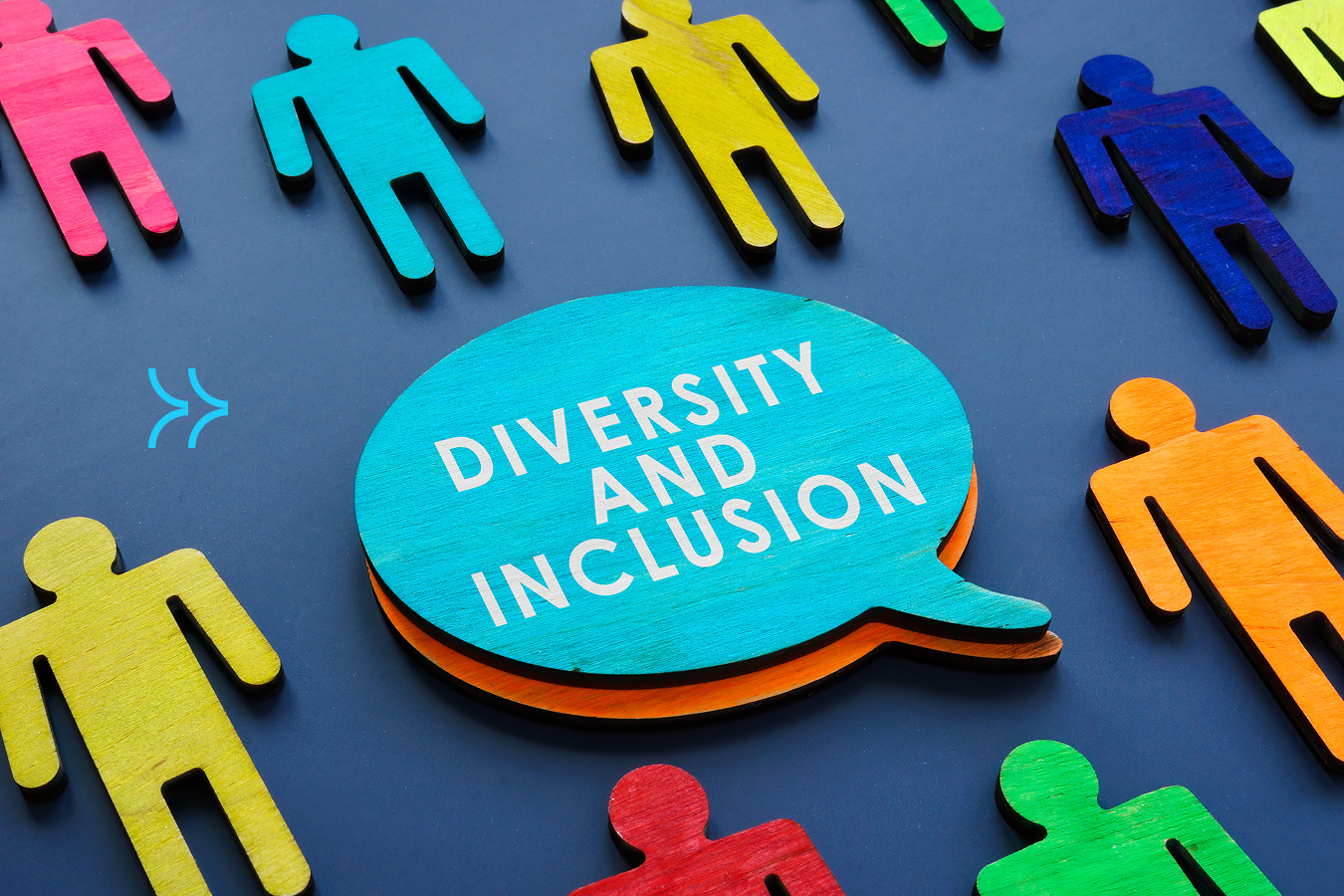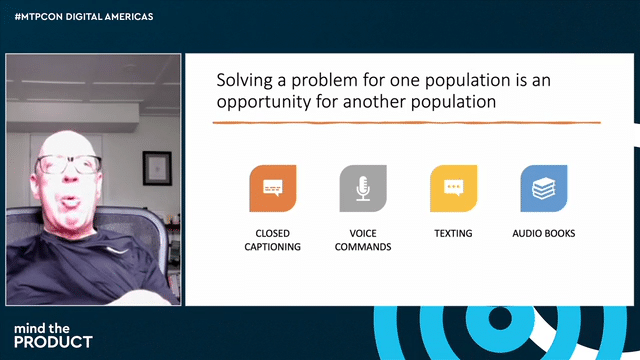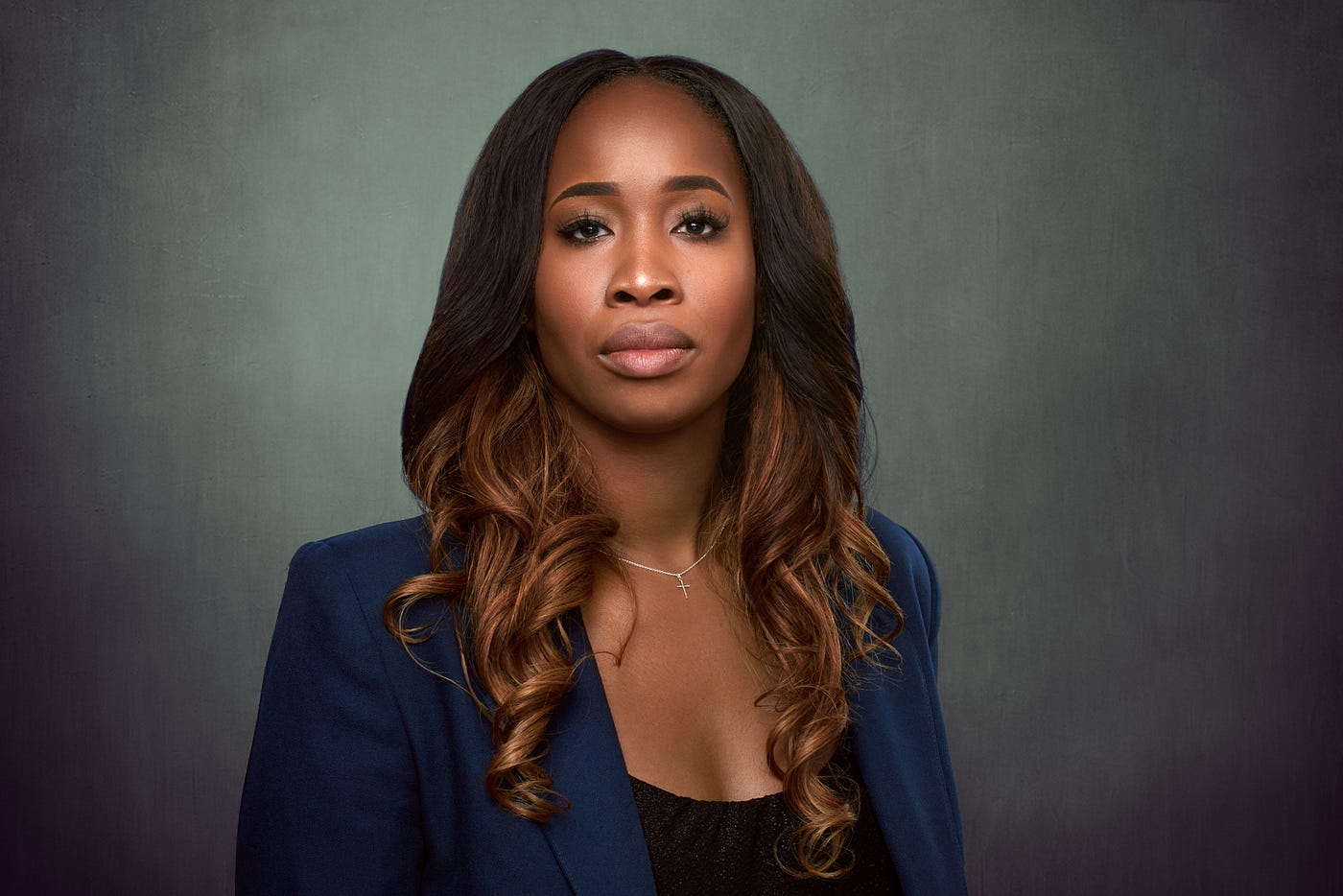We all know that diverse teams build better products: if your products are to resonate and find traction with the general population, then that population needs to be represented within your team. But although we’ve explored the reasons why it makes sense to hire with diversity in mind for some time — for example Martin Eriksson published this Mind the Product post Why diversity isn’t just right, but smart four years ago — progress towards diverse and inclusive environments in tech has been painfully slow. What’s going on?
Silicon Valley tech companies have been notoriously poor at confronting their diversity and inclusion problems, as the continuing fallout from the way Google has handled the departure of ethics researcher Timnit Gebru serves to illustrate. But in tech broadly the progress towards a diverse workforce has been dismal, as much of the recent research on diversity and inclusion shows. For example, a 2020 report on diversity and inclusion from Tech Nation, the government-funded organisation which supports and promotes the UK’s tech startup ecosystem, found that for the last two decades the proportion of women on tech boards has remained the same, despite much public attention and interventions from companies and government. While there are many reports about the failure to address diversity in Silicon Valley, this Computerworld article, published in late 2020, is based on a TrustRadius survey of tech employees across the US and finds that the industry across the US is seen as doing too little to support equality and that diversity programmes are not yet the norm. All in all, it’s hard to avoid the conclusion, as a recent article in the Guardian observes, that many tech businesses still see diversity as a PR issue to be massaged and tinkered with rather than a fundamental problem that needs to be addressed robustly.

So what are we up against? We thought it would be valuable to hear some first-hand accounts from product people who’ve suffered bias as a result of their race, gender, age, or cognitive differences.
Some first-hand experiences
Merissa Silk is a product leader with over 15 years of experience in product. She is currently based in Berlin as Head of Product at renewable energy financing player fundingport. She says: “Being a woman in product is significantly harder than being a man. As I get older, I’m also experiencing a certain amount of ageism, and I think it’s worse because I’m a woman.”
Dealing with sexism
Women in tech are outnumbered and underpaid in comparison to their male counterparts, as study after study has shown over the years. And 56% of women in tech will leave the industry mid career, double the rate of men.
Merissa has had to adapt the way she works in order to counter the gender bias she’s experienced. She says: “Sexism has been a thread throughout my career. I started my career in news, online media and content, and newspapers in New York City are an old boys club. Then I moved into FinTech. Financial services is also an old boys club and on top of that I was leading tech teams that were completely male dominated. I was sitting in a technology team where I was the only woman in a room 90+% of the time.”
One of the biggest challenges early in her career was to find a way to deliver her views so that people would listen: “When I started my career, I was painfully shy. I’ve always been a curious, hungry person, I like to solve problems, but I wasn’t comfortable speaking up. But in these really male dominated spaces, I had no choice. I thought I have something important to say, and I’m the one that’s actually in charge here, and I have to find a way to speak up. So I adopted a lot of qualities that I think are more typical for men. I interrupted a lot, for example. I channelled a person that I looked up to in the workplace and when I thought ‘this person would speak up right now’ I would make myself speak. Or I would put my hand up or stand up in a meeting and make sure that whatever it was I had to say, people would listen to me. This came with a lot of fear at the beginning. And then it just sort of became who I was.”

The gender bias isn’t improving
Research shows Merissa is right when she says she doesn’t believe that the gender bias in the workplace is improving — in fact the pandemic has proved a setback for women at work, with women more likely to have been furloughed or made redundant. A recent insight from McKinsey shows the harm the pandemic has done while this Techrepublic report finds that women in tech have been set back “10 to 20 years” by working from home during the pandemic. And a report from Kaspersky finds that, while some gender improvements over the last two years are acknowledged, 46% of women in tech in APAC say they have been held back from pursuing career changes since March 2020 because of home pressures, compared with 40% of women globally
Merissa comments that gender bias makes some of the authority and influencing skills that are expected of a product manager more of a challenge for women. Product managers need to have a group of people who want to do work for them, but don’t report to them. Gender bias makes it harder for a woman to find their voice, to influence, and create good culture and good performance in their teams. “The kinds of challenges that women face in this kind of role I think have more to do with the broader culture of women at work and the types of roles that women can play,” she says.
Dealing with ageism
Merissa adds that it hasn’t become much easier for her as she’s got older and moved overseas. “I think there are three things that work against me — that I’m a woman, that I’m a foreigner, and my age and level of experience. Especially here in Berlin, which has such a strong startup scene. I hate to say this, but your average Berlin co-founder is probably somewhere between 25 and 28, so he’s a man who has very limited professional experience. If I’m having a conversation, trying to sell my experience and my expertise and the value I could bring to his business, I can see he’s looking at me and thinking ‘I can’t hire her, I don’t hire my mom’.”
Dealing with racial differences
Annette Joseph and Adam Thomas are Black people working in product, Annette in the north of England and Adam in the US.
Agile coach Annette founded consultancy Diverse & Equal just over three years ago. She left her role as the Co-op’s digital delivery manager in the summer of 2020 in order to focus full-time on Diverse & Equal. The consultancy works with organisations to help them understand the business benefits of diversity, and to work with them to create inclusive spaces where diversity can thrive. It also raises awareness of tech roles among people from under-represented groups and equips people with the skills to join the industry. She points to deep-rooted societal bias, reinforced by a flawed education system, as foundational to the problem.
“I came out of school believing that the only thing that my people contributed to civilisation was our labour, which just isn’t true,” she says. “We try to help organisations to take bias out of their systems and processes, and help them to create a culture where people’s differences are actually celebrated.”.
Annette has worked in and around tech for about 30 years. As her career progressed she never saw anyone who looked like: “I’d be in a room with 25 people round the table and I’d be the only person of colour — so I thought ‘we have to do something about this’.” Her experience is that businesses approach diversity as exercises in PR and ethics, and this dooms their efforts to failure. She says: “Businesses see diversity, and specifically ethnic diversity, as the right thing to do, and that’s a lose-lose position. For the business it just falls off the list when another priority comes up. As for the person who has worked hard to acquire the skills and land the role, the perception of them is that they’re just in the job because of their ethnicity. They’re perceived as a token, and not that they deserve to be there.”
Annette says she’s been forced to modify her behaviour all of her working life. She started as a graphic designer — she was the first Black female to train as a graphic designer at her art college — and nearly everyone in her class secured a job before she did. She ended up changing her address so that it wasn’t obvious she lived in Chapeltown (an Afro-Caribbean suburb of Leeds) in order to get businesses to respond to her job applications and then she worked for free at design agencies in order to develop the connections to land a job. Then, at times throughout her career, her contributions have been undervalued and her work overlooked. “I would have the biggest team, or be performing really well, and it would be as if the work just wasn’t being seen.”
Lead Product Manager at SmartRecruiters Adam Thomas is equally forthright about the racial bias he’s encountered throughout his career. “It’s everything,” he says. “Getting a job is hard. Keeping the respect and the dignity necessary to stay happy at a job is hard. It leads to a lot of self-doubt. I don’t get the benefit of the doubt on almost anything. So I spent a lot of time learning how to really prove things. And then also learning how to ignore and go around people who just aren’t going to believe me. You get a very thick skin.”
Adam recognises that his story is extremely rare: “I think I’m really lucky right now. I’m a Black product leader, and I have enough of a public profile that I can say things. I’m also really good at this product stuff, which helps me a lot.”
Dealing with cognitive differences
According to the UK’s National Autism Society just 22% of the UK’s autistic people are in paid work. In the US 85% of college grads affected by autism are unemployed. This article from Atlassian finds that the employment rate for neurodiverse people in tech is very low, even though the industry is frequently cited as somewhere where they can thrive.
Product leadership consultant Marton Gaspar was heaped with praise when, during lockdown, he posted a video on LinkedIn to share his experience of what it means to work as an autistic product manager. In this Product Experience podcast episode, Not Your Typical Product People, he says he realised that no one in the tech space was acting as a speaker and advocate for neurodiversity: “I realised that I just needed to do it… to try to inspire people to own up to their own neurodiversity, because I know a lot of people in really good jobs, and they don’t dare to own up to it in their workplace.”
Marton has been told he comes across as blunt or argumentative when all he’s trying to do is understand what someone wants him to do. He says that people don’t want to explain themselves, but as an autistic person whose brain thinks differently, he often needs more clarity. In the podcast he says: “Diplomacy is not one of my key skills — logic, reasoning, and showing love, and empathy is.”
Marton also says that you can’t apply the same criteria to all candidates when hiring, but a lack of good culture fit is often the easiest way to discount someone who is autistic. He says people can see his facial expression or body language, and mistake it for something else. “You cannot apply the same principles to an autistic person, because their face, their tone, their body language will not be the same.”
Who is committing to diversity in tech?
It’s both telling and very disappointing that everyone we spoke to found it very difficult to cite a business they could immediately hold up as a model for others to emulate its diversity, equity and inclusion strategies.

Jossie Haines, Head of Software Engineering and Director of Diversity, Equality and Inclusion at Tile echoes Annette’s observations when she says that the focus from business has been only on diversity, and not on inclusion, but that “the two have to come together”. She points to the Kapor Center tech leavers study which found that 37% of people who leave within a year, were doing so because they felt unfairly treated: “That that ends up costing the tech industry $16 billion every year.” She very nearly left the industry herself — describing her experience of working at a big tech firm as “a series of microaggressions, it was like death by 1,000 paper cuts”.
“The focus is on diversity because it’s easier to measure,” she says, “you can easily measure if you’re interviewing people of a certain gender, race or ethnicity, it’s a numbers game. But you’re not focusing on creating a more inclusive environment.” No one takes the time to understand inclusion, she says, because not only is it harder to measure, it also means that managers at all levels must be equipped and willing to have inevitably difficult conversations about inclusion.
That said, she’s justifiably proud of the inclusive culture at Tile. She joined the company three years ago, after telling herself she would only work somewhere that values inclusion and was willing to let her spend time developing an inclusive workplace. “The CEO told me he has two daughters and two sisters, no sons and no brothers — and he’d told his wife he wanted to make Tile the best place for women to work.” She started a successful mentoring programme and has had five members of staff switch careers within the company rather than choose to leave in the past two years. She also lets herself be vulnerable with her staff — “if I need a mental health day or whatever I’ll tell them so that they feel comfortable doing it themselves”. “An employee just got an amazing job offer somewhere else,” she adds, “but he’s ended up staying at Tile because he decided he’s not going to get this culture anywhere else.”
Its ethos as a co-operative society working for the community and the common good means the UK’s Co-op seeks to be an enlightened and inclusive workplace. And it is making conscious and concerted efforts to improve its diversity and inclusion profile. Adam Warburton, Head of Digital Products at the Co-op, speaks for many when he says: “Diversity is one of those topics that as a middle-aged white man, I feel completely ill-qualified to talk about. Yet, as a middle-aged white man, I feel I need to use the privilege that I’ve been granted to talk about it.” The Co-op released diversity and inclusion commitments last year and these now form part of the group’s performance measures, and every Co-op manager now has D&I objectives in their performance measures. There is also neurodiversity training for all digital staff so that they can understand how someone’s performance might be affected. Due to concerted efforts in the past, the Digital teams at Co-op have already achieved a healthy gender mix across all disciplines.
Adam says that initially some of the D&I commitments felt “really hard”. “We now have a public commitment that we’ll have diverse shortlists for all roles, with no exceptions,” he says, “and in Manchester there isn’t the diversity in product management always to achieve that. It’s meant we’ve had to think differently about how we approach recruitment.” For example they’ve found that typically 5% of applicants for senior roles come from a diverse background, whereas for junior apprentice roles the percentage is more like 50%, and more representative of the population. Says Adam: “It’s led us to prioritise recruitment at a more junior level. We’ve turned some of the senior roles into junior roles so we can build a constructive talent pipeline for the future.”
He’s found that the theory about diversity stands up. “The communities that we serve are diverse and, therefore, to understand them we need diverse teams. And we definitely notice lower conflict, I would say balance on a team reduces the conflict and leads to better outcomes and performance.”

The UK’s National Autistic Society (NAS) is working with some larger corporations like JP Morgan, SAP, and EY who have signed up to its Autism at Work programme, which aims to help businesses be more autism friendly. The society’s Employment Engagement Manager, Richmal Maybank, feels however that these businesses are part of a pioneering few rather than there being a more concerted will for change. She says: “Awareness is growing, and we’re definitely seeing the emergence of more D&I roles since the Black Lives Matter protests in the summer of 2020, but my sense is that there is greater interest in ethnic diversity and that disability is lagging behind.”
Further details and a few case studies on the Autism at Work initiative can be found on the NAS website. The initiative aims to help businesses make sure that job descriptions are autism friendly and don’t contain too much jargon, and provides support to employers on what to expect from autistic job candidates as well as supporting candidates at interview. Although the initiative has been affected by the pandemic, it helped 16 autistic people in the UK find jobs last year. The NAS is now looking for more employers to come on board and has a target of placing 40 people this year.
What can you do?
While the lack of diversity and inclusion in tech may be rooted in deeply ingrained societal attitudes and cultural norms, most of us would cast ourselves as fair, tolerant and empathetic people. So what can we do?
Switch the narrative, and arm yourself with facts and figures
Adam Warburton says the obvious first step is to talk about diversity and inclusion, but to also recognise that this can be deeply uncomfortable: “The first time you do this everyone will be worried about saying the wrong thing. Ultimately, that’s something that as a group, or as a team, you need to get over so you create a safe space.”
Annette says Diverse & Equal works to switch the narrative from diversity as the right thing to do to the tangible business benefits of a diverse workforce. “If you don’t diversify, it’s dangerous for your business, because you are then putting your business at risk of not being future proof,” she says. “You won’t appeal to a global audience, you’re not going to be able to innovate in the same way as other organisations, and you’re leaving money on the table. Organisations that are ethnically diverse and inclusive are 33-35% more profitable, according to McKinsey.”
Annette adds that a few themes arose from Diverse & Equal’s recent research at the experiences of people from Black, Asian, and minority ethnic backgrounds with the Greater Manchester Responsible Tech Collective, namely: representation, fair pay, promotion, and bullying. She says: “There’s an underlying societal bias that says that when somebody’s skin colour is different, that they’re not as good — no matter what the evidence in front of you says. People don’t want to talk about race, because it is disconcerting, because they do not want to be accused of being a racist. But racism means treating someone differently on the basis of their race and just because we’re not talking about it doesn’t mean that people aren’t being impacted by it.”
Recognise that empathetic leadership is not enough
The will to change has to come both from the board and from the bottom of the organisation, otherwise nothing will change. As Adam Thomas says, really question whether the organisation is serious about D&I, adding that he sees ”a lot of rearranging the deckchairs” when businesses address the issue.
Both Annette Joseph and Jossie Haines comment that diversity has to move beyond HR and recruitment because there are so many areas to consider in building a diverse and inclusive business: it means reducing bias in hiring, ensuring all managers have effective and fair management practices and principles, building a culture of psychological safety. Jossie says: “It needs to be part of your day-to-day, not just an hour-long D&I training once a year. If you are going to sign up for training, sign up for something that’s more interactive and actionable that drips content out to your employees on a regular basis, because that’s how humans learn.”
It can be a daunting prospect. Jossie adds: “Start by doing an overview of your strengths and weaknesses in each of the areas. Then pick a couple that you want to target and define metrics.”
Talk about the why before you roll out any initiatives. You’ll get less resistance and staff will buy in more if they understand how it helps both them and the business.
The NAS’ Richmal Maybank says that historically the onus has been with an autistic individual to navigate a neurotypical workplace, but it’s now generally recognised that this doesn’t change attitudes and perspectives towards autism. Internal champions, buddy and mentoring systems and employee resource groups are all hugely helpful, she says, and she cites Rolls Royce as an example of a business that does this well.
There are also a number of practical steps you can take that will help neurodiverse staff immensely. For example look at the light and temperature of the office, and at flexibility in working practices. Says Richmal: “It might be helpful to an autistic person to avoid travelling in the rush hour, or to avoid being in the office on Mondays and Fridays when the office small talk — which they may find difficult to engage in — is at its greatest.”
She says there are also practical adjustments that can be made, such as fair warning or set times for meetings: “Give agendas and specific instructions. If you want an update, how long should it be, tell them what you want to know. Everyone finds these things difficult but we need to acknowledge that Autism Spectrum Disorder (ASD) employees find it harder, so compassion is important.”
Setting diversity targets
Adam Warburton says that the Co-op’s 50% diversity target made them think differently, “if we’ve been asked to improve by diversity by 10%, we would just have looked at how we iterate what we have”. He says: “We might not get to exactly 50%, but we’ll get a lot closer to 50% than we would have done had the target not been there,” adding, “in any company of two people or more, a 50% target is realistic.”
Further reading
For smaller businesses and start-ups without the resources for consultancy fees and diversity audits there’s lots of information and help online.
- Segregated Valley: the ugly truth about Google and diversity in tech
- Five Years of Tech Diversity Reports—and Little Progress
- Why I’m No Longer Talking to White People About Race
- Design bias is harmful, and in some cases may be lethal
- Tech Leavers Study, Kapor Center
- Naturalist and TV presenter Chris Packham on his own autism and why we must get more autistic people into work
Discover more content on Diversity and Inclusion.








Comments
Join the community
Sign up for free to share your thoughts